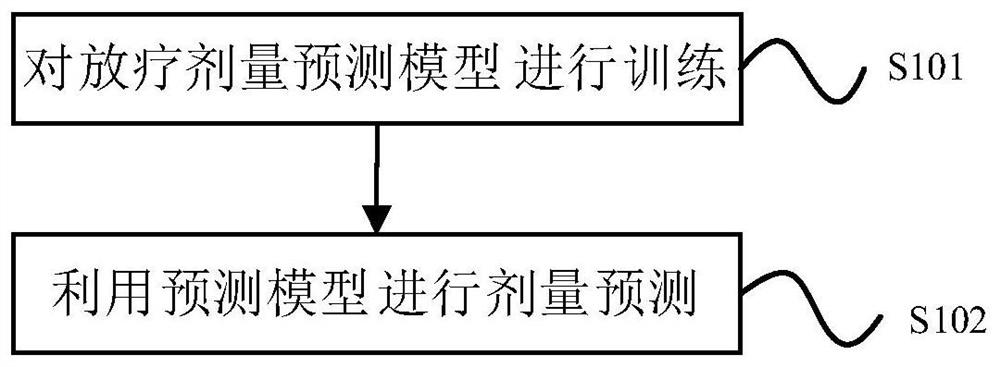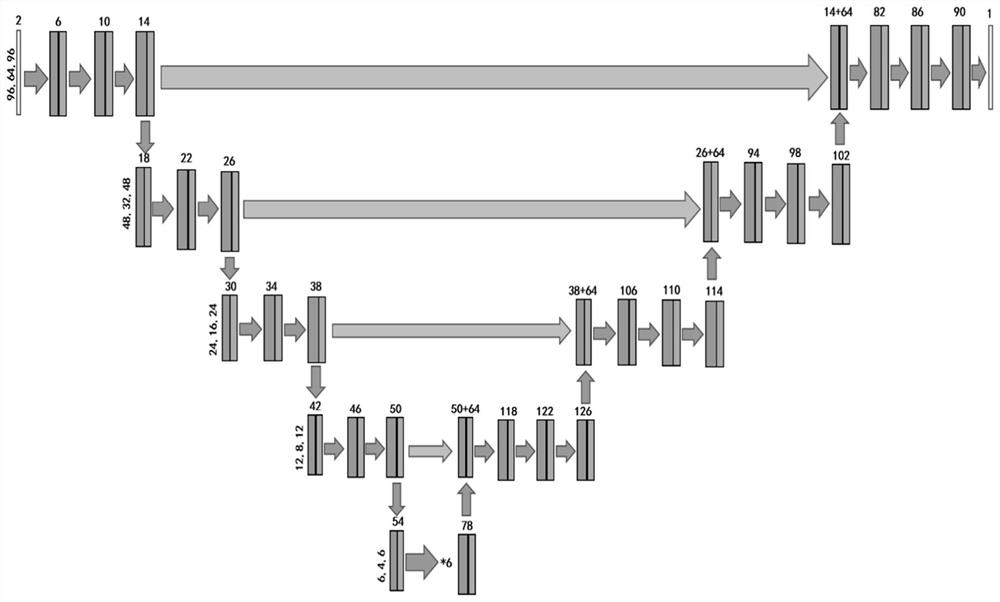Dose prediction method and device for robot radiotherapy equipment
A technology for radiation therapy and dose prediction, applied in radiation therapy, therapy, X-ray/γ-ray/particle irradiation therapy, etc.
- Summary
- Abstract
- Description
- Claims
- Application Information
AI Technical Summary
Problems solved by technology
Method used
Image
Examples
no. 1 example 1
[0022] figure 1 It is a schematic flow chart of a dose prediction method for a robot radiation therapy device according to the first embodiment of the present invention, as shown in figure 1 As shown, the method includes the following two steps.
[0023] Step S101: training the radiotherapy dose prediction model. Specifically, the patient phantom is established according to the patient's medical image, and the phantom is constructed according to the mapping relationship between the pixel value of the medical image and the physical material and electron density; according to the parameters of the treatment head of the robot radiotherapy equipment, the first calculation method of radiotherapy dose is used Calculate the dose distribution H of the single shot field of the patient phantom; calculate the dose distribution L of the single shot field of the patient phantom by using the second calculation method of radiotherapy dose according to the parameters of the treatment head of...
no. 1 example
[0028] In an optional embodiment, the deep learning neural network is HD U-Net. figure 2 It is a schematic diagram of the deep learning neural network structure of a robot radiotherapy equipment dose prediction method according to the first embodiment of the present invention, as shown in figure 2As shown, HD U-Net contains five hierarchical structures to reduce the feature size. Through the 2×2×2 pooling layer (Pooling) between each layer, the feature map (Feature Map) is finally reduced to 6× at the bottom layer. 4×6 to learn local and global features. In each layer, a convolutional kernel of size 3×3×3 is used and zero padding is used to maintain the size of the feature. In the first half of HD U-Net, each convolution step generates 4 feature maps (filters). In the remaining half, except for the last convolution step, the number of feature maps per convolution layer increases by 4 from bottom to top. The last convolution step produces one channel as the final output. ...
Embodiment 2
[0034] The embodiment of the present invention provides a device for predicting the dose of robotic radiotherapy equipment, which is mainly used to implement the method for predicting the dose of robotic radiotherapy equipment provided in the above-mentioned content of the embodiment of the present invention. The following describes the robotic radiotherapy equipment provided by the embodiment of the present invention The dose prediction device will be introduced in detail.
[0035] image 3 It is a schematic structural diagram of a device for predicting doses of robotic radiotherapy equipment according to the second embodiment of the present invention. Such as image 3 As shown, the robot radiotherapy equipment dose prediction device 200 includes the following modules:
[0036] Model training module 201, which is used to establish a patient phantom according to the medical image of the patient, and the phantom is constructed according to the mapping relationship between the...
PUM
 Login to View More
Login to View More Abstract
Description
Claims
Application Information
 Login to View More
Login to View More - R&D
- Intellectual Property
- Life Sciences
- Materials
- Tech Scout
- Unparalleled Data Quality
- Higher Quality Content
- 60% Fewer Hallucinations
Browse by: Latest US Patents, China's latest patents, Technical Efficacy Thesaurus, Application Domain, Technology Topic, Popular Technical Reports.
© 2025 PatSnap. All rights reserved.Legal|Privacy policy|Modern Slavery Act Transparency Statement|Sitemap|About US| Contact US: help@patsnap.com



